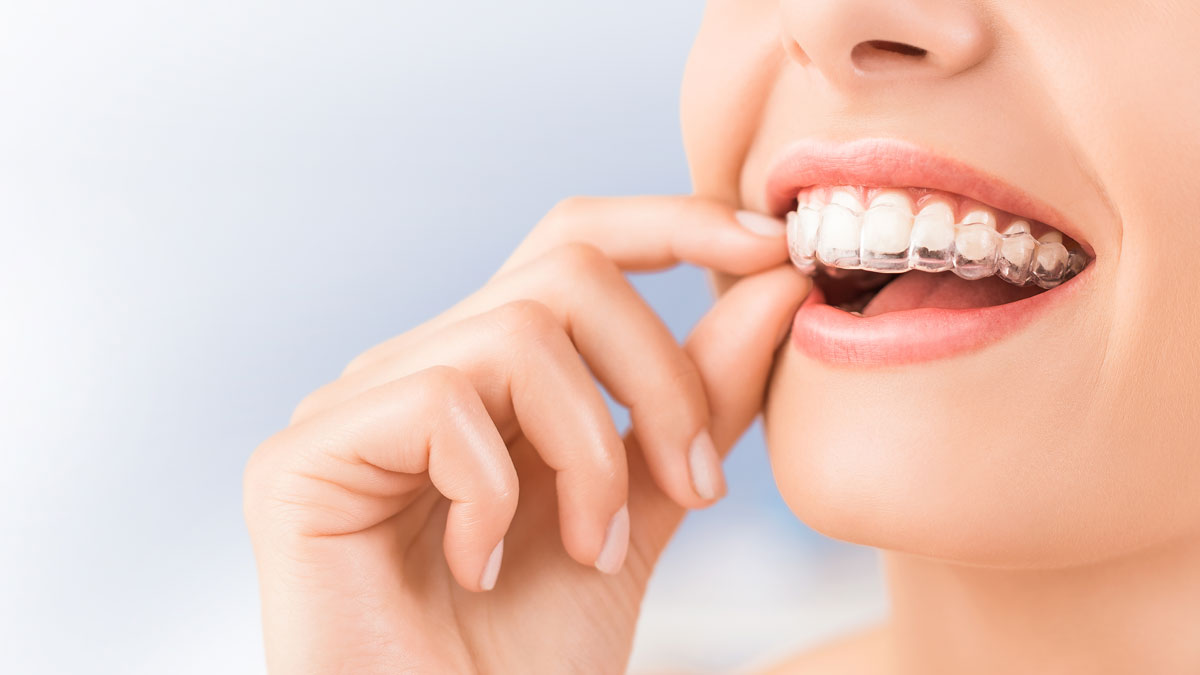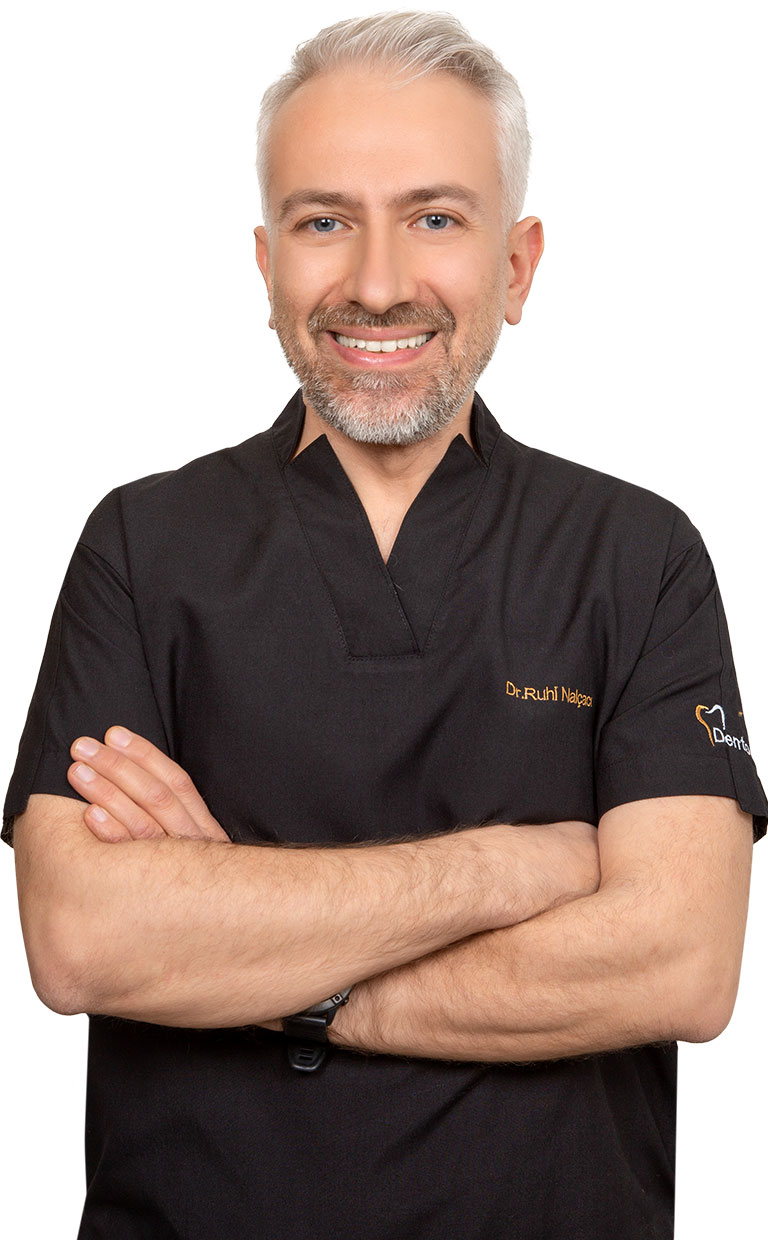Orthodontic Treatment
Orthodontics, a speciality of dentistry, is focused on diagnosis, prevention, and treatment of teeth and jaw misalignments. The condition known as malocclusion in which teeth and jaws are misaligned may be treated with braces.

The development of crooked teeth may be caused by a combination of various factors but sometimes it is a result of a simple negligence in one’s childhood. Although our genetics inherited from our parents are largely responsible for the shape of our teeth and jaws, such issues may also develop as the result of an early loss of deciduous teeth and lack of proper care afterwards. Determining orthodontic problems at their early stage and planning a treatment while taking necessary precautions is a very important step in the way towards a beautiful smile.
Why teeth become crooked, how should they be treated?
Orthodontic disorders may develop as a result of genetics, some functional habits, or a combination of factors. In general, due to various genetic influences, teeth and jaw sizes may not fit and as the result, teeth grow crooked or form a diastema. In some cases, thumb sucking or long-lasting use of teat and feeding bottle may cause orthodontic defects. Whatever the reason, in dental and skeletal disorders, it is possible to bring teeth to their expected position in order to achieve a beautiful smile by means of orthodontic treatment.Is there any age limit for orthodontic treatment?
We can have our teeth corrected at any age. The only requirement for dental braces treatment is healthy bones and healthy structure of the teeth. The thing which is changing together with the age is a type of treatment. In the cases where there are no problems with the upper or lower jaw but the teeth are crooked are similar at any given age. The sole difference is the time of the treatment – it may last longer when we are older due to the bone metabolism which slows down as we age. However, the treatment of skeletal disorders such as the lower or upper jaw extending forward should be performed at the age when the bone growth is quick. This rapid growing period of patient is determined by an orthodontics basing on the hand-wrist radiograph. In situations where skeletal problems are realised late and the growth process is already done, the only remaining choice is a corrective jaw surgery (or orthognathic surgery). American Association of Orthodontics (AAO) suggests undergoing an orthodontic examination at the age of 8. We also support early visits to the orthodontist’s office to take necessary precautions before the quick growing period has passed.The prices of orthodontic treatment
The prices of orthodontic treatments in Trabzon are, as it happens in other regions of Black sea, based on the price list published by Turkish Association of Dentistry. It is common in Turkey to provide an instalment plan for orthodontic treatments since they are considered a long-lasting treatment. The exact price of braces treatment in Trabzon is determined according to the length of the treatment, the material from which the brackets will be made – metal or transparent ones (porcelain, sapphire, Invisalign), and technique to be used, such as braces placed on the inside (lingual orthodontics).Orthodontic Treatment (Braces) FAQ
Assuming that teeth are correctly aligned, may the jaw extending forwards or backwards still cause problems?
While teeth which are well-aligned against each other may satisfy a patient, it is still preferred to timely conduct a treatment since they do not align with their counterparts in the other jaw.
Are dental braces the only orthodontic treatment or are there other alternatives?
In the process of correcting one’s teeth we usually use dental braces but with the technological development solutions, until recently used for esthetic purposes such as braces placed on the back of one’s teeth, transparent brackets, porcelain brackets have started to be used in orthodontic treatments. Also Invisalign treatment that involves wearing a series of custom-made clear plastic aligners is one of the best esthetic choice for adult orthodontics.
What is Invisalign?
Invisalign is at the forefront of cosmetic orthodntic technology. Unlike the more traditional braces or appliances, Invisalign is a virtually invisible method of straightening your croked teeth. You will be fitted with removable aligners that have been specifically manufactured to fit your teeth.
The aligners will gradually cause your teeth to shift their correct position slightly over a period of one or two weeks. Every two weeks, you will change the aligners for a new set that will cause your teeth to move a little more. As the treatment progresses over the following weeks and months, your teeth will straighten into their proper positions, as prescribed by your dental practitioner. For invisalign prices in Trabzon please contact our office.
The aligners will gradually cause your teeth to shift their correct position slightly over a period of one or two weeks. Every two weeks, you will change the aligners for a new set that will cause your teeth to move a little more. As the treatment progresses over the following weeks and months, your teeth will straighten into their proper positions, as prescribed by your dental practitioner. For invisalign prices in Trabzon please contact our office.
What problems will a person with crooked teeth who do not undergo an orthodontic treatment experience?
An aesthetic smile increases one’s self-confidence and the healthiest way to achieve it is orthodontics. The presence of crooked teeth means that there are areas between teeth which are hard to clean. Places hard to clean are prone to develop cavities. As a result, orthodontic treatment is conducted not only to achieve esthetic results, but also to protect the patient’s health.
What are preparations necessary to be conducted in one’s mouth before the orthodontic treatment?
Dealing with all dental caries and conducting all root canal treatments before the orthodontic treatment is, essential. After the start of the orthodontic treatment, professional tartar removal conducted by a doctor in regular intervals, together with special mouth care necessary to be conducted by the patient will have an impact on one’s protection against the appearance of new tooth decay and gum problems.
How should dental care be conducted throughout the process of orthodontic treatment?
Patients undergoing orthodontic treatment should not only brush their teeth three times a day with an orthodontic toothbrush but also use an interdental brush to clean spaces between brackets. Mouthwashes may also be used to support this care.
What should be done to prevent the braces from falling during the orthodontic treatment?
Brackets are attached to teeth with a white substance which can separate from them affected by very cold and acidic foods and drinks. Eating tough or hard food may also cause them to fall.
What is the harm caused by falling braces?
Teeth move with forces impacting them. The fall of braces means that such a force is no longer inflicted on teeth and as a result, the treatment stops. Falling braces should be reattached as soon as possible.
Can overbite or underbite caused by thumb sucking be corrected?
The most important is to remove this factor – in time make the child stop thumb sucking. If the thumb sucking is left before the age of 6, the teeth are expected to return to their place. If they will not come back totally, an orthodontic treatment may be conducted after reaching 12 years.
Can an impacted canine be brought to its place?
Impacted canines may be brought to their place depending on their position revealed by Roentgen and the situation in the jaw. In order to determine their position, a panoramic roentgen or 3D tomography (CBCT) are conducted.
Are forward/ backwards extending jaws and crooked teeth caused by genetics?
If a child takes from one parent the genes responsible for large teeth and from the other the genes responsible for a small jaw, the effect will be crooked teeth in the future. However, such a problem occurring in one of the parents does not mean that the child will surely have crooked teeth.
What may happen if we don’t use the removable appliances given after the orthodontic treatment?
Removable appliances ensure that your teeth will assume their final form. If they are not used, teeth may start disaligning again and the next treatment with dental braces may be required.
Are there any other systems providing a stabilisation of newly realigned teeth after the orthodontic treatment other than removable braces?
There are permanent wires called “ Lingual retainer” which are attached to the back of one’s teeth. However, they are not suitable for every patient. The doctor will choose a method according to the particular case.

